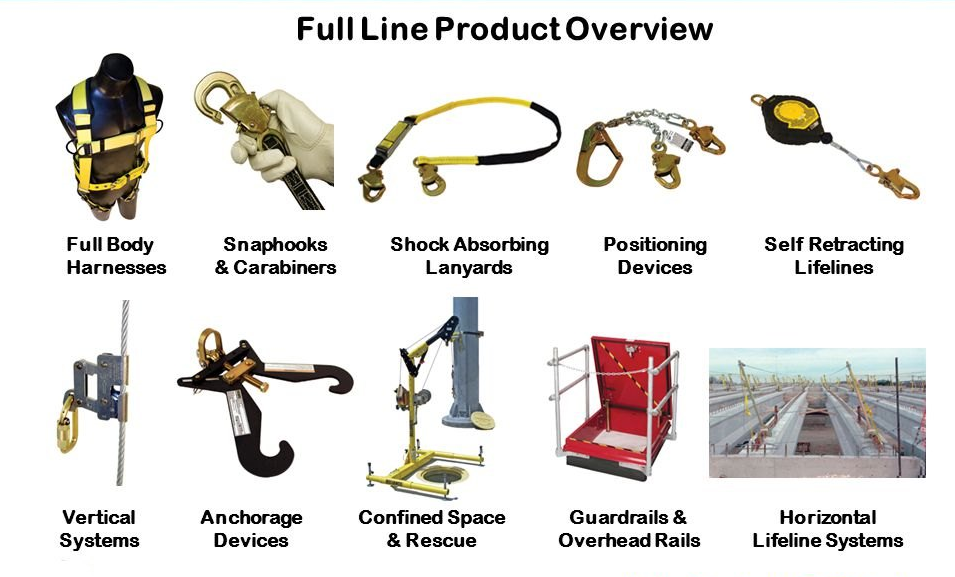
1. Prioritize Compliance with Standards
- Ensure products meet OSHA 1910.140, ANSI Z359.1 (U.S.), or EN 361 (EU) for full-body harnesses, and EN 795 for anchor devices. Compliance guarantees minimum strength (e.g., 22 kN for harnesses) and durability.
2. Match Equipment to Specific Hazards
- For high-voltage power engineering, choose non-conductive lanyards (e.g., Dyneema®) to prevent electrical conductivity .
- In construction, prioritize harnesses with dorsal D-rings for fall arrest and lateral rings for positioning.
3. Assess Environmental Conditions
- Extreme weather: Use corrosion-resistant materials (e.g., stainless steel connectors) for wet or coastal areas.
- High winds: Select weighted anchor systems to prevent displacement.
4. Opt for Ergonomic Design
- Choose harnesses with padded straps and adjustable buckles to reduce fatigue during prolonged use. Lightweight designs (<5 lbs) improve mobility.
5. Integrate Advanced Detection Technologies
- Leverage AI-powered monitoring (e.g., deep learning systems) to detect improper harness usage in real-time via job-site cameras.
6. Verify Anchor Point Strength
- Anchor devices must support 5,000 lbs per worker (OSHA requirement). Use EN 795-certified anchors for concrete or steel structures.
7. Consider Rescue Preparedness
- Include self-rescue devices (e.g., descent controllers) or team-assisted systems (e.g., tripod lifts) in fall protection plans.
8. Prioritize User Training
- Train workers on donning/doffing harnesses, inspecting equipment for wear (e.g., frayed webbing), and emergency procedures .
9. Regular Maintenance & Inspection
- Follow manufacturer guidelines for cleaning and storage. Replace gear after any fall event or every 5 years (whichever comes first).
10. Leverage Sustainable Innovations
- Explore recyclable harness materials (e.g., thermoplastic polyurethane) to align with circular economy goals.
Knowledge Of 10 CE Standards For Fall Protection Products
Here are 10 CE standards relevant to fall protection products:
- EN 361: Personal Fall Arrest Systems
- Specifies the requirements for full body harnesses designed to protect users from falls.
- EN 362: Connecting Devices
- Covers requirements for connectors such as carabiners and snap hooks used in fall protection systems.
- EN 363: Fall Protection Systems
- Provides guidelines for the design and performance of complete fall protection systems, including arrest and restraint systems.
- EN 364: Testing Methods
- Outlines the testing methods for various fall protection equipment to ensure they meet safety standards.
- EN 365: General Requirements for Fall Protection Equipment
- Establishes general requirements for the use, maintenance, and care of fall protection equipment.
- EN 795: Anchors for Personal Fall Protection Systems
- Specifies requirements for anchors used in fall protection, including testing and installation guidelines.
- EN 1497: Rescue Harnesses
- Covers requirements for harnesses designed specifically for rescue purposes, ensuring safe retrieval of a fallen worker.
- EN 12841: Rope Access Systems
- Details the requirements for rope access systems used in work at height, including personal protective equipment.
- EN 13374: Temporary Edge Protection Systems
- Provides specifications for temporary edge protection systems used during construction or maintenance to prevent falls.
- EN 14122: Fixed Work Platforms and Walkways
- Addresses safety requirements for fixed work platforms and walkways, ensuring they provide adequate fall protection for users.
These standards help ensure that fall protection products are safe and effective for use in various work environments. Always check for the latest versions and specific applications relevant to your industry.
10 Tips For Choosing Fall Protection Products From China
When sourcing fall protection products from China, consider these 10 tips:
- Research Suppliers Thoroughly
- Tip: Investigate potential suppliers by checking their business licenses, certifications, and customer reviews. Look for companies with a solid track record in safety equipment.
- Verify Compliance with International Standards
- Tip: Ensure that the products meet relevant international standards (e.g., ANSI, OSHA, or EN). Request certificates of compliance and verify them with the issuing organizations.
- Request Product Samples
- Tip: Before placing a large order, request samples of the fall protection equipment. This allows you to assess the quality, durability, and comfort of the products firsthand.
- Evaluate Manufacturing Practices
- Tip: Ask about the manufacturing processes and quality control measures in place. Look for suppliers that use advanced technology and adhere to strict quality standards.
- Check Material Specifications
- Tip: Inquire about the materials used in the products. Ensure that they are durable, weather-resistant, and appropriate for your specific work environment.
- Assess Customization Options
- Tip: If you have specific needs, check if the supplier offers customization options, such as branding or tailored designs that suit your operations.
- Understand the Warranty and Return Policy
- Tip: Review the warranty terms and return policy before purchasing. A good warranty indicates the supplier’s confidence in their products.
- Consider Lead Times and Shipping
- Tip: Discuss production lead times and shipping options to avoid delays. Make sure to factor in any customs regulations that might affect delivery.
- Communicate Clearly
- Tip: Maintain open communication with your supplier. Clearly express your requirements, and be proactive in asking questions about their products and processes.
- Plan for After-Sales Support
- Tip: Ensure that the supplier offers reliable after-sales support. This includes assistance with installation, maintenance advice, and addressing any product issues.

